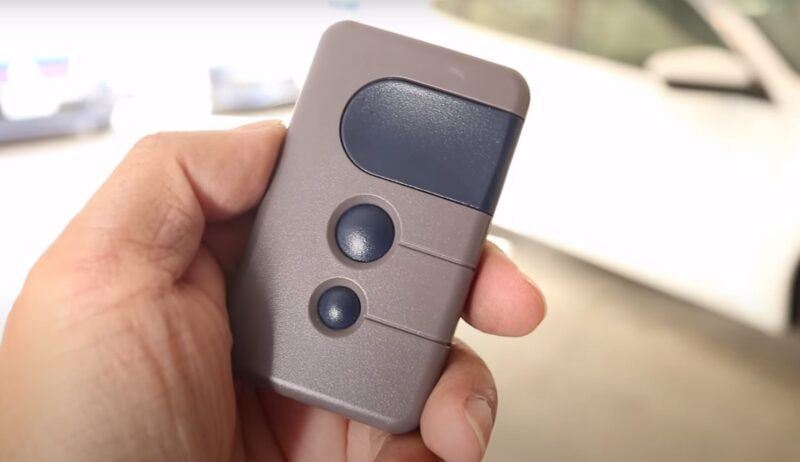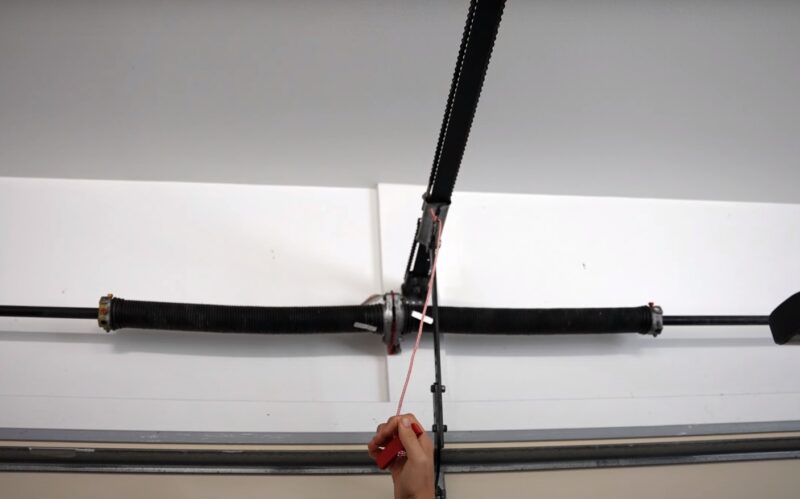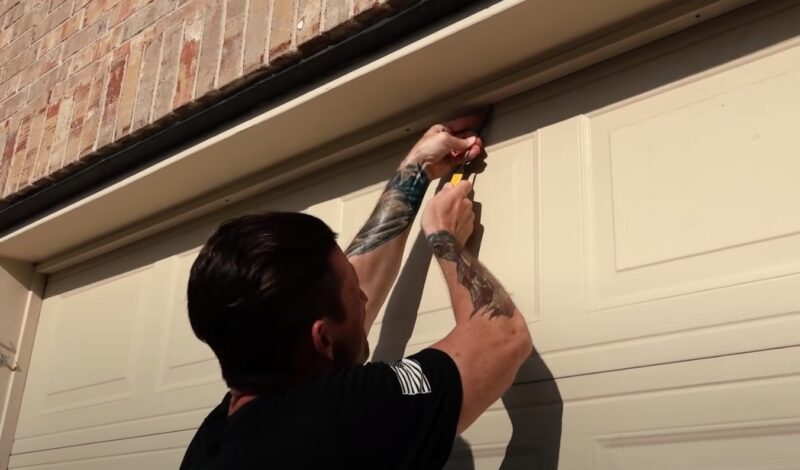Opening a garage door manually is a skill that becomes essential during a power outage.
In this post, I will walk you through the steps to open your garage door manually, explaining each part of the process in detail.
By the end, you’ll be well-equipped to handle this task safely and efficiently.
Key Takeaways
- Use Emergency Release Cord: Engage the emergency release cord, usually red, to manually operate your garage door during a power outage.
- Safety First: Ensure the door is in the down position before disengaging and lift it using proper technique to avoid injury.
- Regular Maintenance: Regular lubrication and balance checks are essential for smooth manual operation.
- Professional Assistance: Seek professional help for issues like broken springs or electrical problems.
- Re-engagement Post-Power Outage: After a power outage, re-engage the garage door opener by pulling the release cord towards the door and running a complete cycle.
What Happens During a Power Outage?

When there’s a power outage, your garage door opener, which usually operates electrically, can’t function.
This situation calls for manually operating the garage door. But before you start, it’s important to know the mechanics and safety precautions involved.
Is Your Garage Door Ready to be Manually Operated?
- Check the Door’s Position: Ensure your garage door is in the down position before attempting to disengage it. Opening a garage door that’s stuck in an awkward position can lead to extensive damage or injury.
- Inspect for Broken Springs: If your door is too heavy to lift, it might indicate a broken spring. In such cases, avoid attempting to move the door and seek professional repair services.
How to Disengage Your Garage Door?
The emergency release cord, typically a red rope, plays a crucial role. It disconnects the trolley mechanism from the opener carriage, allowing you to operate the door manually.
Why is the Emergency Release Cord Important?
This cord is your main tool during a power outage. It helps you safely secure the door in an open or closed position without the need for electric power.
How to Use the Emergency Release Cord?

- Locate the Cord: It’s usually hanging from the opener carriage and is red for easy identification.
- Pull the Cord: Firmly pull the release cord downwards. This action disengages the trolley from the opener carriage.
How to Manually Move the Door?
After disengaging, you can manually move the garage door. Be mindful of the full weight of the door and open or close it gently to avoid any damage.
Re-engaging the Garage Door Opener
Once the power is back, you need to re-engage your garage door opener. This process involves pulling the release cord towards the door and reconnecting the trolley to the opener carriage.
Run the opener through a complete cycle to ensure proper re-engagement.
Opening the Garage Door from the Outside

When Would You Need to Open it from Outside?
In some cases, you might need to access your garage during a power outage when you’re not inside.
Using an Emergency Release Key and Cord
To open the door from the outside:
- Use the emergency release key to unlock the door.
- Locate the emergency release cord.
- Pull the cord to disengage the opener and lift the door manually.
Remember: Always Close Manually
After manually opening the door, remember to close it manually as well, for security and safety.
What About the Inside?

Steps to Manually Open from Inside
- Unplug the automatic door opener.
- Pull the emergency release cord.
- Manually open the door.
The Key is Not Needed Inside
Unlike the outside method, you don’t need a key to open the garage door from the inside.
Troubleshooting Common Manual Operation Issues

While operating your garage door manually is generally straightforward, you might encounter some issues. Understanding how to troubleshoot these problems can save you time and hassle.
When the Door Won’t Move
If your door doesn’t budge when you try to open it manually:
- Check for Obstructions: Ensure there’s nothing blocking the door’s path.
- Inspect the Springs: If a spring is broken, the door won’t move easily and will require professional repair.
Difficulty in Lifting the Door
A garage door that’s hard to lift might indicate:
- Unbalanced Springs: The springs might need adjustment.
- Lubrication Required: The tracks and rollers might need lubrication for smoother operation.
Maintaining Your Garage Door for Manual Use
To ensure your garage door operates smoothly, both manually and electrically, regular maintenance is crucial.
Lubrication
Regularly lubricate the tracks, rollers, and springs. This reduces friction and makes manual operation easier.
Balance Test
Perform a balance test periodically:
- Disengage the opener.
- Lift the door halfway and let go. It should stay in place, indicating well-balanced springs.
Visual Inspection
Regularly inspect the door for signs of wear and tear. Pay attention to the springs, cables, rollers, and pulleys.
Enhancing Manual Operation Safety

Safety is paramount when operating your garage door manually.
Use Proper Technique
When lifting the door, use your legs, not your back, to avoid injury. Keep your hands away from the joints to prevent pinching.
Keep Children and Pets Away
Always ensure children and pets are clear of the garage door when operating it manually to prevent accidents.
Reconnecting to Power: A Step-by-Step Guide
Once the power is restored, reconnecting your garage door opener is a straightforward process:
- Plug in the Opener: If you unplugged the automatic opener, plug it back in.
- Engage the Trolley: Pull the release cord towards the door to re-engage the trolley.
- Run a Test Cycle: Operate the door with the opener to ensure it’s properly engaged.
When to Call a Professional

Some situations require the expertise of a professional, such as:
- Broken Springs: Handling springs can be dangerous without proper training.
- Electrical Issues: If there’s an issue with the opener’s electrical system.
- Structural Damage: If the door or its frame is damaged.
FAQs
Can I open my garage door manually from the outside without a key?
No, if your garage is equipped with an external locking mechanism, you’ll need the emergency release key to disengage the lock.
How often should I perform maintenance on my garage door?
Perform basic maintenance, like lubrication and visual inspection, every six months. Professional servicing is recommended annually.
Is it safe to replace garage door springs myself?
No, replacing garage door springs can be extremely dangerous due to the tension they are under. Always hire a professional.
Can weather affect my ability to open the garage door manually?
Yes, extreme cold or heat can cause the door to expand or contract, making it harder to move.
Is it safe to open a garage door manually if it has an automatic opener?
Yes, it’s safe as long as you use the emergency release cord to disconnect the door from the opener.
Should I lubricate the emergency release cord?
No, lubricating the cord is unnecessary and could make it slippery and harder to grip.
Can I install an emergency release kit myself?
Yes, if you’re handy and follow the manufacturer’s instructions carefully. However, professional installation is recommended for safety.
What should I do if the emergency release cord is not accessible?
Contact a garage door professional to either make the cord accessible or provide an alternative solution.
Will manually operating my garage door void its warranty?
Typically, no. However, check your specific warranty terms to be sure, as policies may vary by manufacturer.
Concluding Thoughts
Knowing how to open your garage door manually is invaluable, especially during a power outage. It’s a straightforward process that involves using the emergency release cord and safely handling the door’s weight.
Remember to always prioritize safety and seek professional assistance if you encounter issues like a broken spring. With these steps, you’re now equipped to handle this task confidently.
We recently wrote about how to build a paint booth in your garage, so check it out if you are considering a useful upgrade.
